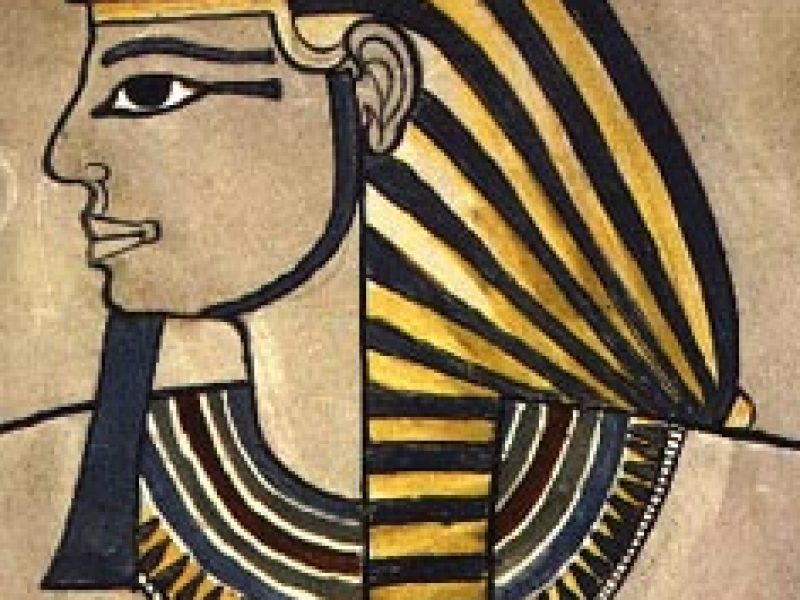Nemes Headdress “Symbol of Pharaohs, Authority, Egyptian Regalia & Power” Nemes were pieces of striped head cloth worn by pharaohs in ancient Egypt. It covered the whole crown and behind of the head and nape of the neck (sometimes also extending a little way down the back) and had lappets, two large flaps which hung down behind the ears and in front of both shoulders. It was sometimes combined with the double crown, as it is on the statues of Ramesses II at Abu Simbel. The earliest depiction of the nemes, along with a uraeus, is the ivory label of Den from the 1st Dynasty. It is not a crown in itself, but still symbolizes the pharaoh’s power.he Nemes is not really an ahead crown but rather a striped fabric headcloth reaching the shoulders worn by the rulers of ancient Egypt such as the boy King Tutankhamun who is seen wearing one on his golden mask. Note: The Newes is an ancient Egyptian symbol of ancient Egyptian regalia, rebirth, royalty, Pharaohs, power, and authority. It represents the Royal Ka and can be seen on the head of all the deities and Pharaohs across history.





Comment (0)